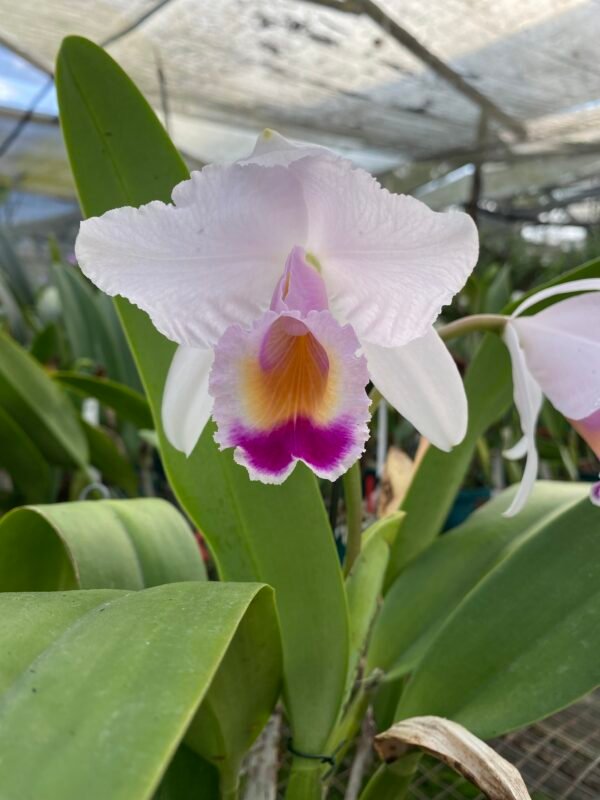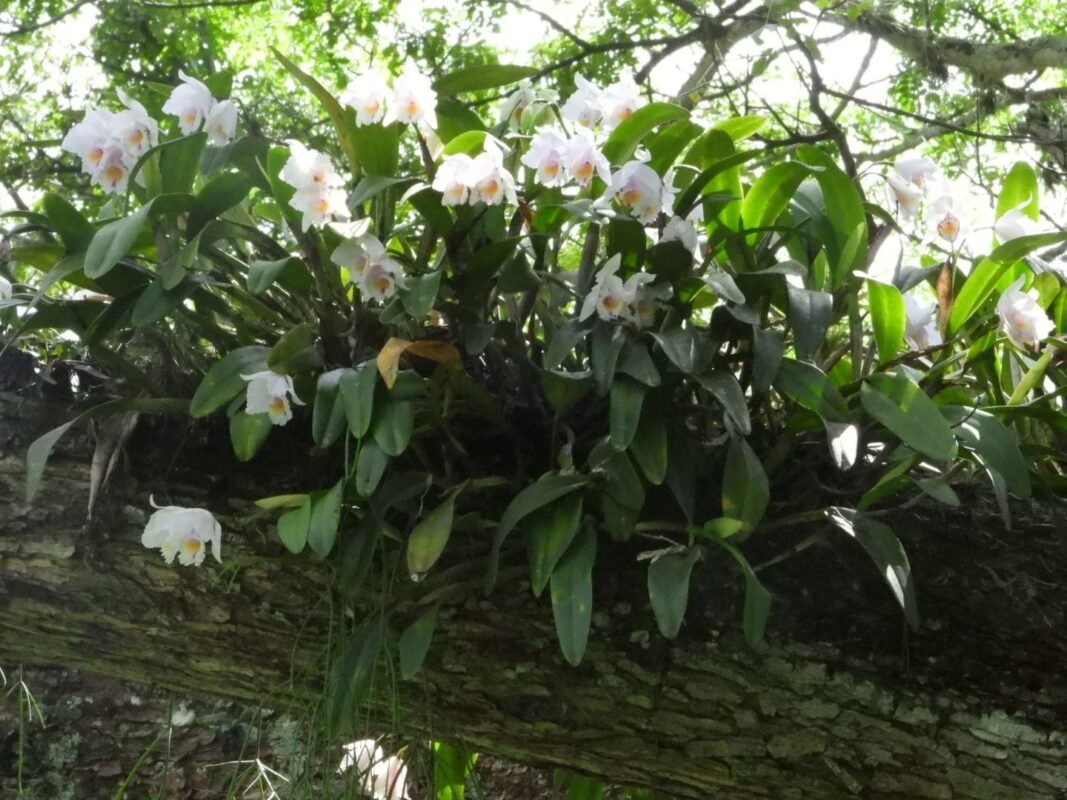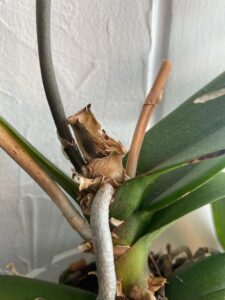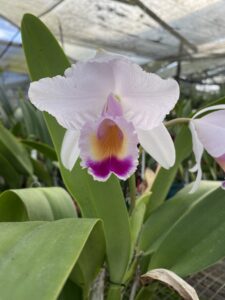The Cattleya quadricolor is a species of orchid belonging to the Cattleya genus, which is part of the Orchidaceae family. It is endemic to the Cauca Valley River in Colombia, specifically on the eastern slopes of the Western Cordillera and the western slopes of the Central Cordillera of the Andes. It can be found at altitudes ranging from approximately 1000 meters above sea level to 1200 meters above sea level. These orchids are epiphytic, meaning they grow on the upper parts of trees where they can receive almost direct sunlight and gentle breezes.
The Cattleya quadricolor is characterized by compressed pseudobulbs that can reach heights of 20 to 30 cm, with a single dark green leaf that can measure up to 30 cm in length. From these pseudobulbs emerge large and showy fragrant flowers, usually between 2 and 4 per inflorescence, with a diameter around 14 cm. The main color of the flower is white, with pink, yellow, and purple markings on the lip.

During a journey to South America, the prominent German naturalist Alexander von Humboldt passed through the Cauca Valley and reported an orchid that he called “Cymbidium cándido” at that time (a genus that is not native to the Americas). Later on, the Colombian taxonomist Pbro. Pedro Ortiz Valdivieso found the original herbarium specimen in Paris and determined that it was the Cattleya quadricolor. Therefore, for many taxonomists, the original name would be “Cattleya candida.” It has also been known as “Cattleya chocoensis,” but the most accepted name is “Cattleya quadricolor.”

Like other orchids, the Cattleya quadricolor requires specific care to thrive. This includes a well-draining growing medium, regular watering, and appropriate fertilization. Furthermore, it’s essential to provide an environment that mimics its natural habitat, meaning bright light, high humidity, and good air circulation.
The Cattleya quadricolor is a source of pride for the departments of Risaralda, Quindío, and Valle del Cauca in Colombia, as this is the only place in the world where this orchid is found naturally. Due to the loss of much of its forest habitat because of deforestation, both in situ and ex situ protection are vital for its preservation. Organizations like Orquivalle have worked on the vegetative propagation and reintroduction of this species into its native area.
This orchid species is highly sought after by collectors and enthusiasts for its flowers, distinctive fragrance, variability, and beautiful colors.





